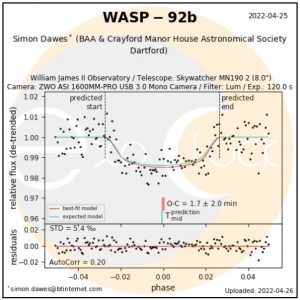Another set of observations by Simon for the ExoClock project.
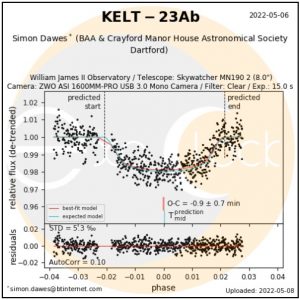
KELT-23Ab was discovered using the Kilodegree Extremely Little Telescope (KELT).
Astronomy every Thursday
Another set of observations by Simon for the ExoClock project.

KELT-23Ab was discovered using the Kilodegree Extremely Little Telescope (KELT).
Two more great images of our Sun on the 8th & 9th May 2022 by Simon Dawes and now up to Sunspot number AR3007.
Sunspot AR3006 however is behaving a bit odd as described on Spaceweather.com ''A MIXED-UP SUNSPOT: Sunspot AR3006 is having an identity crisis. It is supposed to have a +/- magnetic field. Mostly it does. But deep inside the sunspot's primary core, the polarity is opposite: -/+................The mixture of magnetic polarities makes this sunspot interesting and dangerous. When opposite polarities bump together, it can light the fuse of magnetic reconnection--the explosive power source of solar flares. If AR3006 flares today, it will be geoeffective. The sunspot is directly facing Earth.''
NEVER LOOK AT THE SUN DIRECTLY. Please click here for solar observing safely.
The Sun 8th May 2022
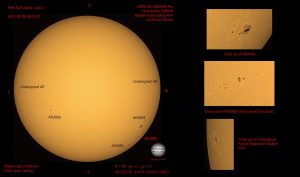
The Sun 9th May 2022
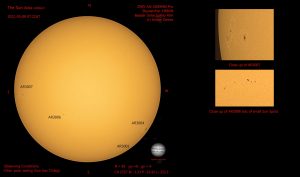
An awesome capture by Simon Dawes of a Supernova called SN2022hrs in NGC 4647.
NGC 4647 is an intermediate spiral galaxy in the constellation Virgo. Supernova SN2022hrs was discovered in the galaxy NGC4647 on the 16th April 2022 by astronomer Koichi Itagaki. NGC 4647 is 63 million light years away, so, this star exploded 63 million years ago and it took that long for the light of the explosion to reach us.
Messier 60 (NGC 4649), an elliptical galaxy, is also in the image and it is in the centre of the frame and NGC 4647 is slightly down and to the right of it. SN2022hrs looks like a bright star in front of the galaxy but it is actually an exploding star within the galaxy.
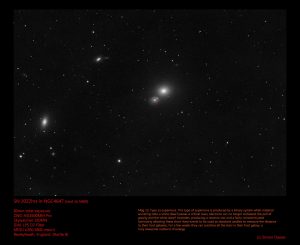
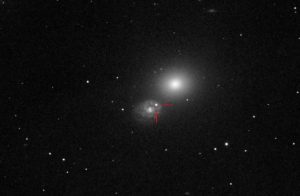
The latest image of the Sun taken by Simon Dawes.
NEVER LOOK AT THE SUN DIRECTLY. Please click here for solar observing safely.
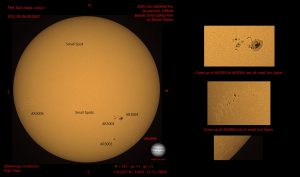
A fantastic image of Comet C/2019 L3 (ATLAS) in Gemini taken by Simon Dawes on the 24th April 2022 from Bexleyheath in Kent.
Simon has included detail about how and when he acquired the image on the photo below showing the comet which is the fuzzy round shape in the centre of the image.
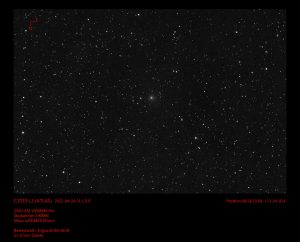
Comet C/2019 L3 (ATLAS) was discovered on the 9th of June 2019 by the ATLAS program.
Whilst CMHASD member views of Venus & Jupiter from the UK were blocked by cloud, two superb images of Venus & Jupiter were captured in the early morning skies of the 28th & 30th April 2022 by member Richard Bohner in Arizona, USA.
The first image taken on the 28th at 04:30 MST was acquired using a Canon 6D, ISO 500 and an 8 second exposure time. Jupiter is on the left and Venus on the right and only 2.3 degrees apart.
The second image, taken on the 30th at 05:00 MST (using a Canon 6D, ISO 500 and a 6 second exposure time) shows Venus & Jupiter appearing even closer together, in fact very close. The planets were separated by the same angular distance as a full moon: about 1/2 degree!!! Three moons of Jupiter; Ganymede, Io and Callisto can also be seen in the 2nd image.
The Venus-Jupiter conjunction happens about once a year but this year the two planets appeared closer than they usually do. The last time the two planets were closer than this year's conjunction was in August 2016 but it was more difficult to see since they were closer to the sun. The next time they will get this close is in 2039.
Jupiter & Venus 28th April 2022
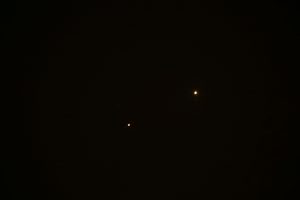
Jupiter & Venus 30th April 2022
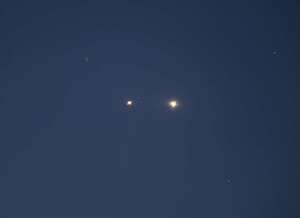
Although Venus and Jupiter appear next to each other in the sky they are nowhere near each other in space. The actual orbit of the planets is around 430 million miles apart (690 million km) nearly five times the Earth–sun distance!
You can also understand why the ancients called planets wanderers too.
Oh my word, what a fortunate man member Martin Crow was last evening whilst out Kayaking on the river near Burnham on Crouch in Essex. Martin got to witness something very rare and absolutely stunning; 3 rainbows together!!! Two rainbows are often seen by people but 3 rainbows or the beginnings of a 3rd is a rare sight to see.
Luckily Martin captured this special event on his phone, see below and member Honor Wheeler explained the 3rd rainbow ''It's a reflection of the main rainbow from the water reflecting back into the sky. A reflection bow. Super capture lucky you''.
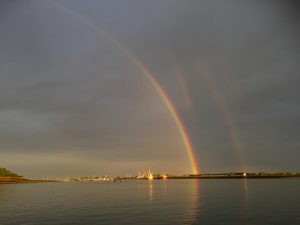
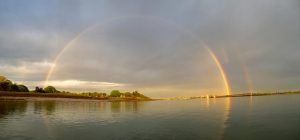
The Sun on the 30th April 2022 taken by Simon Dawes. As you can see the Sun was still 'active' re sunspots on that day.
As of today (5th May) we are now up to AR3006 and in the past 24 hours sunspot AR3004 has produced over 18 solar flares (15+ C-class flares and 3 M-flares).
NEVER LOOK AT THE SUN DIRECTLY. Please click here for solar observing safely.
The Sun on the 30th April 2022
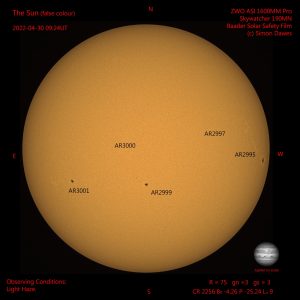
Planet Mercury at the bottom & M45 (The Pleiades) above right taken on the 28th April 2022 at 2015 local time MST in Arizona, USA. Richard acquired this splendid image using a Canon 6D, 400mm tele f2.8, ISO 800 and 12 second exp.
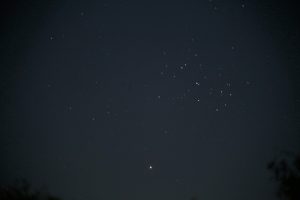
The latest set of observations by Simon for the ExoClock project of the exoplanet WASP-92b which orbits its parent star WASP-92, an F7 star, every 2.17 days.
